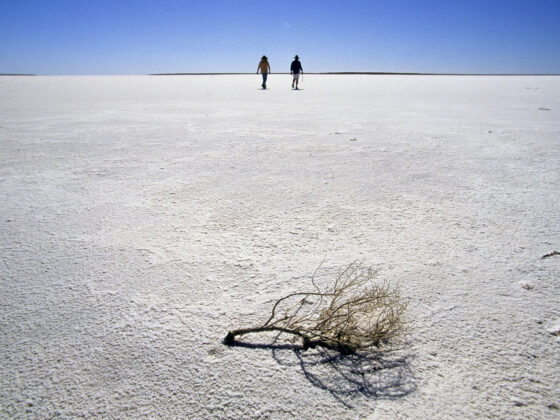Being able to cook in a camp oven is a right of passage for any semi-serious tourer or four-wheel driver. Sure, snags and veggies on the gas cooker is perhaps a simpler option, but you won’t get the same reaction from the troops as you do with a four-hour slow–cooked camp roast. Choosing the right weapon for this roast has gotten a little more involved with spun steel camp ovens really starting to take off, moving away from the standard cast iron camp oven option. We thought it time to have a look at both options of camp ovens, and give you the pros and cons of each, to make sure you get the best oven for you.
The Cast Iron Camp Oven
The cast iron camp oven is no new thing. They were initially developed by the Dutch in the 17th century, and were affectionately known as ‘Dutch Ovens’. They are, as the name suggests, made from cast iron, and are a rather solid unit. They offer excellent heat retention due to their construction and wall thickness on the oven and distribute the heat over the entire oven reasonably well. If you look after them, they will last you a lifetime, so long as you clean them after use, and then keep them seasoned with a bit of oil to stop them rusting.
PROS
- Exceptional heat retention; perfect for slow cooking
- Even heat distribution – easier to get the ‘oven’ effect from them and a touch easier to cook with for first-timers chasing the traditional camp-oven roast.
- Longevity – look after your oven, they’ll look after you.
CONS
- They’re a heavy bit of kit for what they are.
- If they do begin to rust, it’s hard to bring them back to a usable state.
- They’re brittle. If you drop one of these, there’s a good chance it will crack which renders it just about useless.
The Spun Steel Camp Oven
The spun steel camp oven, more affectionately known as the Bedourie Oven is an Australian adaption of the cast iron camp oven. Originally, the drovers working on Bedourie Station in western Queensland worked out that the cast iron camp ovens they were using would break if they fell from their pack horses once they made camp. A mild steel camp oven was created in response to the breakages of the cast iron options they were using. The spun steel ovens are lighter, stronger, and less brittle than their cast iron counterparts, and will not crack or break if dropped.
That said, they are much thinner than the cast iron option, and so don’t retain heat as well, or offer as even heat distribution. When cooking with them, extra care must be taken to keep an eye on the amount of coals added to the base, and more coals should be added to the top of the oven, to have the heat dissipate downwards as a traditional oven would.
PROS
- Lightweight – they’re usually a third of the weight of a cast iron camp oven
- Much more robust than their cast iron counterpart
- They heat up and begin cooking much quicker; so can be used open on a fire as a skillet/frying pan.
- Can be used easily on coals or a gas cooktop.
CONS
- They do not retain the heat as well as cast iron, so more care is needed when cooking.
- Much harder to get a solid slow-cooked roast from – more practice needed to get your roasts spot on.
Caring for your camp oven
Seasoning your camp oven should be the first thing you’ll do with your new cast iron or spun steel camp oven. You can do this at home before the first adventure of into the great beyond on your barbeque. Before you do anything, give the entire camp oven a thorough wash down with mild soapy water, to get any manufacturing oil or residue out.
You’ll need to lightly oil the entire camp oven, including the lid, pot, and handle. If you can, use a high-smoke point oil, like canola oil, or sunflower oil. They won’t smoke as badly when you’re seasoning the new oven, and so don’t burn off as quickly. Plus it won’t upset the neighbours too bad!
Once you’ve lightly oiled the pot, get the barbeque going, and run it up to high heat with the lid closed.
For a cast iron camp oven:
Then you’ll want to add the camp oven, with the lid and pot separated, and with the pot upside down. Let it run on med-high heat for about 30-40 minutes, then turn the barbeque off and let it cool down naturally. Leaving the lid on the barbeque closed will slow the cooling process, which will negate any chance of the cast iron cracking, especially in the cooler months.
For a spun steel camp oven:
Similar process as to the cast iron oven, however, you can leave the lid on the camp oven, and you should only need to run the barbeque for around 10-15 minutes. This is due to the spun steel oven being thinner, and absorbing the heat a lot quicker. As with the cast iron oven, allow it to cool slowly, and that will have you just about done.
Once your camp oven has cooled down, enough to touch, you’ll want to lightly oil the oven, both inside and out, to stop it from rusting until your next cook up.
After every use, you’ll want to ensure the camp oven has a slight oil film over the entire oven, especially so if you’ve needed to scrub it clean.
And there you have the ins and outs of the cast and spun camp oven.

















